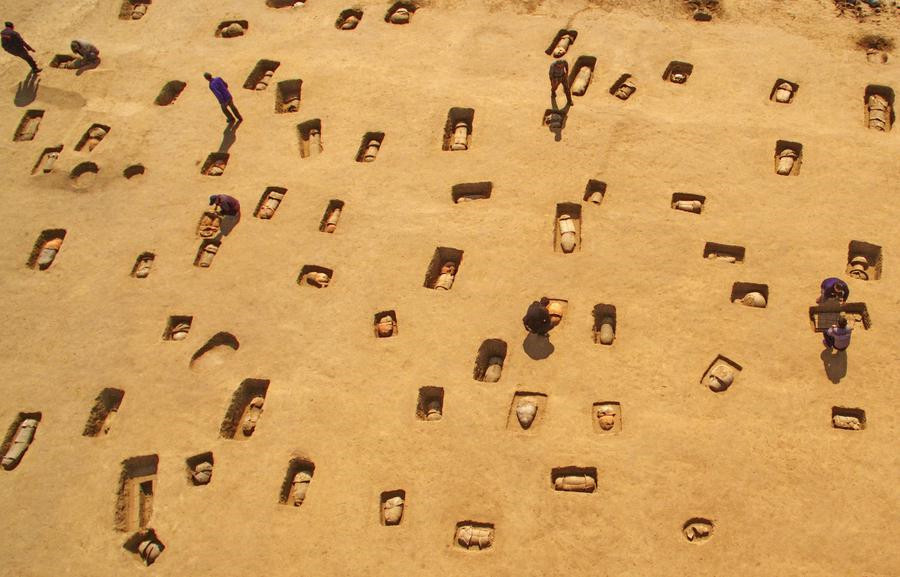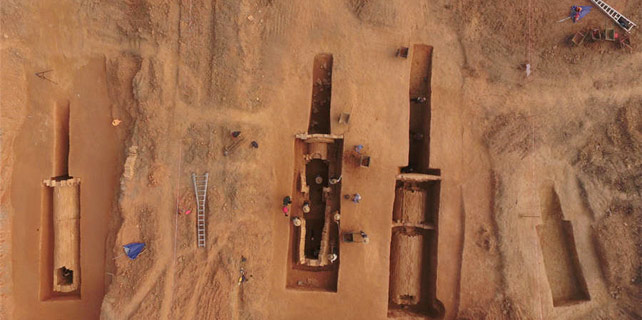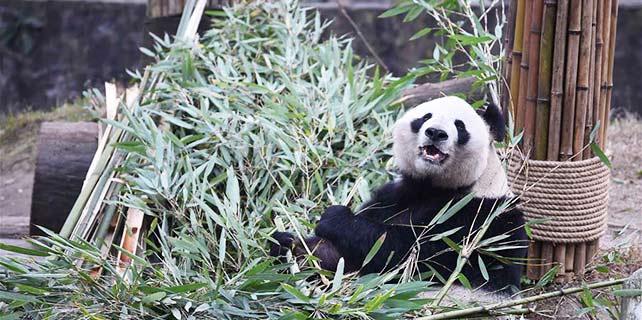China's major archaeological discoveries in 2016
 |
|
Archaeologists work at the ancient tomb site in Huanghua city, North China's Hebei province, Oct 10, 2016. [Photo/Xinhua] |
Ancient group tombs from Warring States Period discovered in Hebei
A total of 113 tombs, estimated to be more than 2,000 years old, have been discovered in Huanghua city, North China's Hebei province, which was thought to be the site of an ancient city called Fudi.
Human remains have been found and were buried using a method called 'urn burial', which means the corpses were wrapped using two to three large clay containers, such as urns, pots and bowls.
A small hole would be drilled at a side of the clay coating. It's believed that this was to let the soul of the deceased come and go freely.
Utensils made from pottery were also found and dated to around the Warring States (475 BC-221 BC) period.
Bai Yunxiang, vice head of the Institute of Archaeology under the Chinese Academy of Social Sciences, said the discovery will inform research into burial customs and city planning in ancient times.













